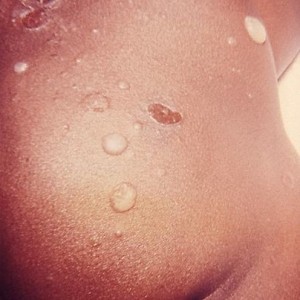What is impetigo?
Published: March 26, 2020
Impetigo is a highly contagious bacterial skin condition commonly found in babies and small children. The condition is divided into two types:
- bullous impetigo - this causes large, painless, fluid-filled blisters.
- non-bullous impetigo - this is more contagious than the former and causes sores that quickly burst to leave a yellowish-brown crust. It is more common than bullous impetigo, accounting for around 70% of all cases.
Impetigo is also classed as either primary, when bacteria enters otherwise healthy skin, or secondary, when the infection is brought on by another underlying cause, such as eczema.
The condition usually affect children because of the close contact they have in schools and nurseries and because their immune systems are not fully developed yet, it can however also affect adults who are living in extremely close proximity of each other, such as in army barracks.
What causes it?
Impetigo is caused by infection with staphylococcal or streptococcal bacteria. It can invade healthy skin through a cut or insect bite, but is more commonly caused by a secondary infection – i.e. when the skin is already affected by another condition, making it easier for the bacteria to penetrate its defences and establish an infection. Such underlying skin ailments might include eczema, scabies, head lice or nappy rash.
It is spread from person to person through close physical contact or by sharing towels, for example. Because symptoms do not appear until up to 10 days after initial exposure, it is difficult to control trasmission and the disease is often spread unintentionally.
What are the symptoms?
Impetigo does not cause any symptoms until 4 to 10 days after infection. Symptoms of bullous impetigo begin with the appearance of fluid-filled non-painful blisters, usually on the central part of the body above the waist, the arms or legs (but not the head or neck). These blisters eventually burst to leave a yellowish-brown crust, which heal and do not scar. This may be accompanied by:
- Itching around the blisters
- Fever
- Swollen glands
How is it treated?
It is important to take your child to the doctor, if you suspect he or she has impetigo, as antibiotic treatment is needed to get rid of the infection. In mild cases, an antibiotic cream applied locally is all that is needed, but in more severe cases antibiotic tablets or syrup are prescribed.
Once treated, the condition usually clears up within a week, but the child must remain out of school until the blisters crust over and heal to avoid infecting others. To prevent another episode, it is important to keep cuts and grazes clean and properly manage existing skin conditions.
Click here to read about LeAnn Rimes’ battle with eczema.
Images: Wikimedia Commons







Leave a Reply